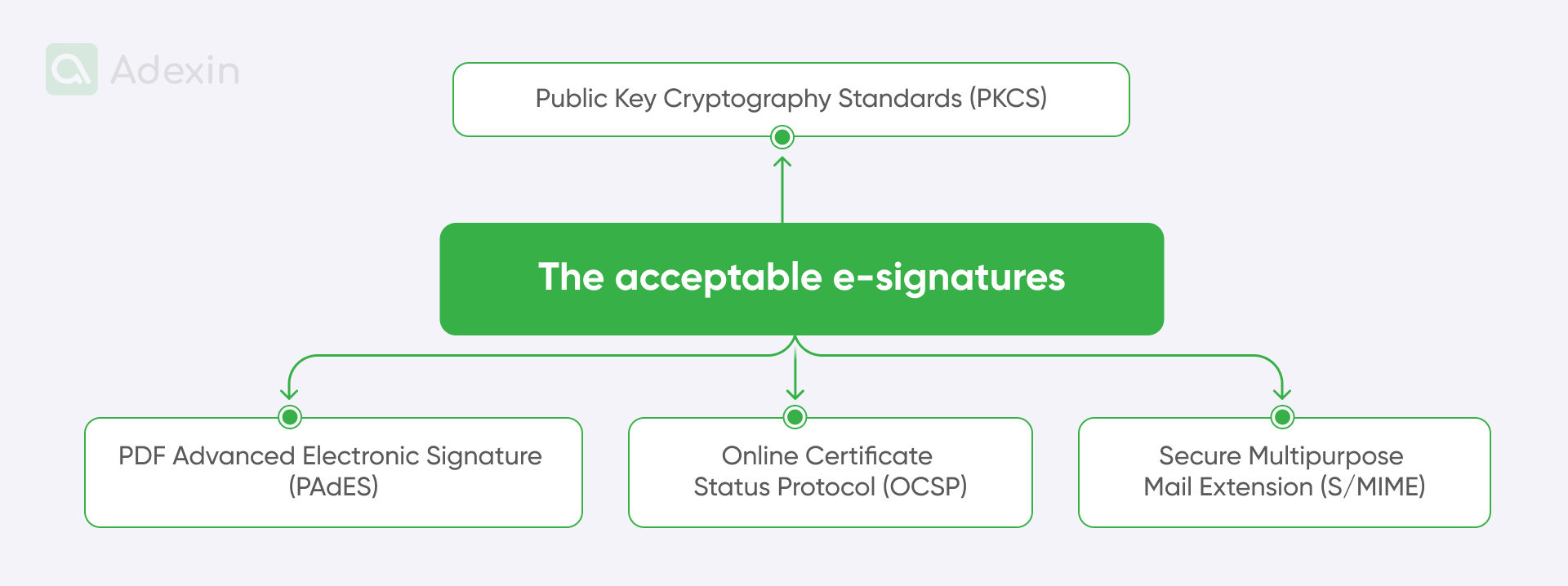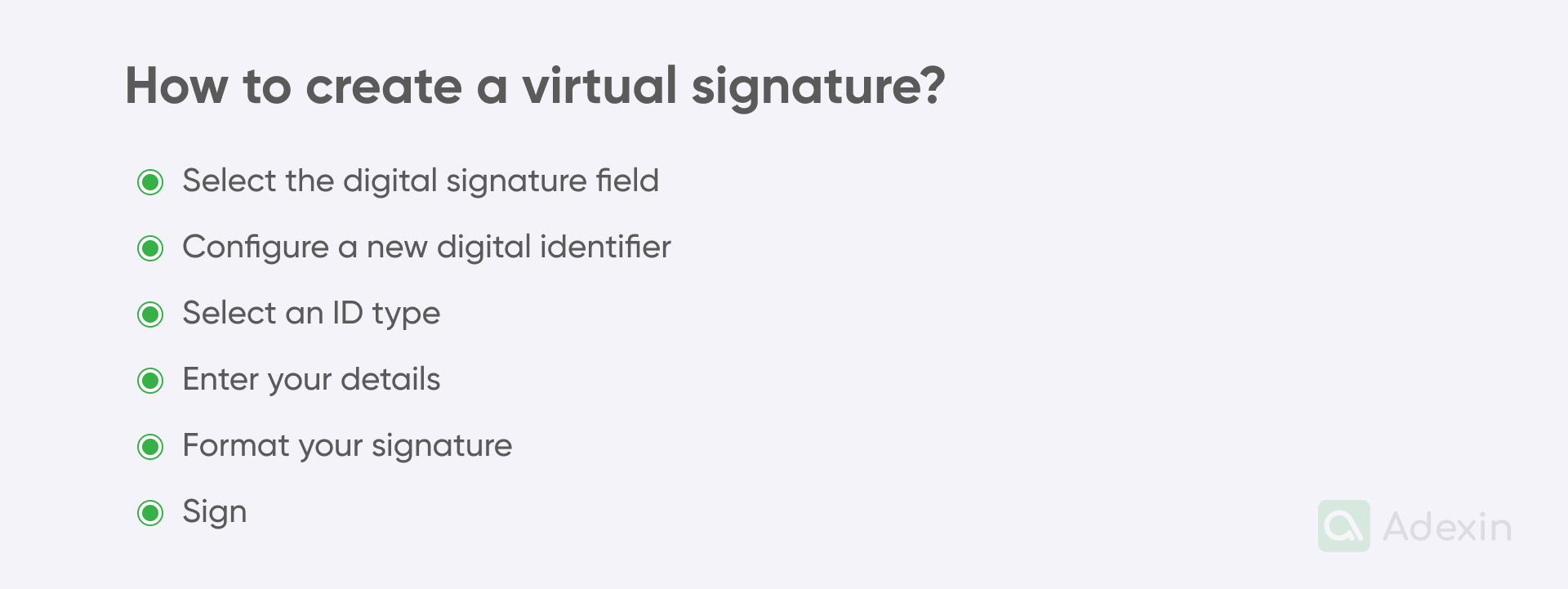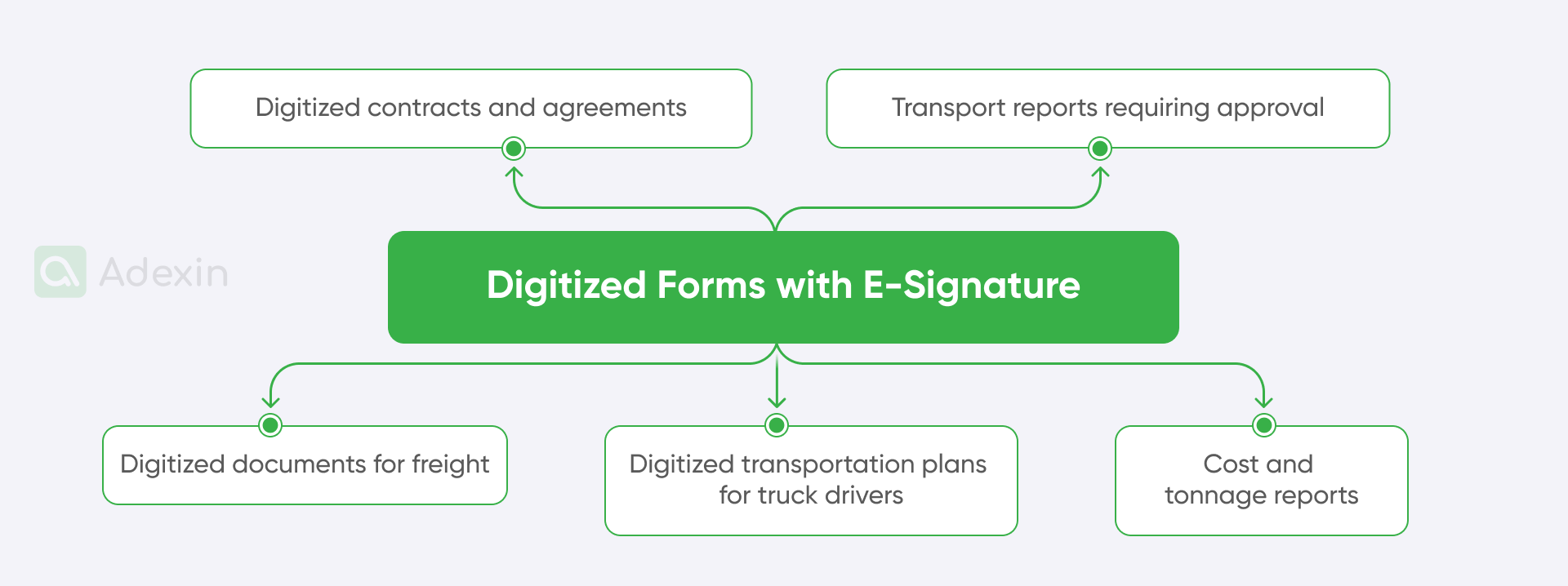It is already time to wave away paperwork in the world of transport. Modern technology is currently revolutionizing the way documents are handled in the logistics industry. It's no secret that the volume of shipments around the world is constantly increasing, and as a result, the need for efficient and secure methods of document authorization is a must.
Relying on our experience, you can step with us to learn more about virtual document signing, where electronic signatures are fixing the most common issues in transportation with document discrepancies and many more. From technologies offering biometrics to traceable emails, the technology is streamlining the entire document workflow process. Let's buckle up because the future of logistics is digital!
What is virtual document signing?
Modern technologies are pushing paperwork out of the transportation document flow. With innovative solutions for managing transport documents, there's a growing need for legitimate methods of document authorization. This is because many logistics documents require high accountability and often need approval from various stakeholders involved in the entire in-transit document flow.
Virtual document signing is about using an electronic signature to sign a document. E-signature technology is based on either a traceable email or biometric applied to a message. Biometrics involves the conversion of handwritten characters into a digital format using cryptography. In other ways, it can be as simple as a fingerprint that is used as proof and reference for certain transactions, for example, POD-approvals in a supply chain. [1]
In the logistics and transport industry, signing documents using a virtual signature is increasingly popular and even a necessity when it comes to large documents volumes. The increasing number of shipments worldwide has led to a significant increase in document flow. This flow often depends on customs regulations and preferred transport methods. Therefore it requires a document distribution system, traceability and digital signature methods for approval.

What are the acceptable e-signatures?
A fundamental requirement for digitally signed documents is that they cannot be removed and applied to other documents by third parties. In many cases, a duplicate electronic signature can be considered a forgery, as can duplicating someone else's signature on paper documents. Transport documents cannot be electronically validated using another person's signature, whether it is digital or not.

Document electronic signatures can be accepted in various ways, taking various software-generated forms. Several electronic signature format standards are embedded into digital documents, such as:
Public Key Cryptography Standards (PKCS)
Online Certificate Status Protocol (OCSP)
PDF Advanced Electronic Signature (PAdES)
Secure Multipurpose Mail Extension (S/MIME)
These standards allow for implementing the following types of acceptable electronic signatures:
Entered name on the signature block
Handwritten signature image scanned or digitized and attached to the electronic record.
Manual signature entered into the electronic signature panel
A handwritten signature is entered into the electronic signature panel
A free-hand signature, mark, or command entered on a screen using a stylus
A signature created by external software
In addition to these technical requirements, digital signatures must comply with legal regulations provided by local and international lawmakers, such as the European Telecommunications Standards Institute (ETSI) or the US Uniform Electronic Transactions Act (UETA). [2]
How to create a virtual signature
Companies must adopt the necessary software within their organization to create a virtual signature. This can be achieved by contracting commercial software that allows submitting electronic records containing an electronic signature.
Transportation companies can make informed decisions by equipping themselves with the right technology. This technology can provide secure signatures whenever any law requires or authorizes the filing of any information, notice, customs, or other document or record with any business entity. While some companies can use software with public domain licenses, for the transportation industry, it is highly advisable to use customized software that allows for maximum secure electronic record exchange.

To create a virtual signature, you need to use software with an interface that allows you to record your dedicated signature based on your handwriting characteristics. Here are the typical steps in creating an e-signature:
Step | Description |
|---|---|
What is a typical example of an e-signature in transportation?
Here are examples of e-signatures in transportation:
Electronic documents for pre-approved documents
Digital signatures on customs or any transport documents, proof of delivery, and others, allowing for unloading trucks or crossing borders.
E-signature on commercial contracts
The transportation industry uses virtual signatures to sign different types of commercial contracts, service agreements, employment contracts, and those that apply to banking/finance law.
Alongside these typical examples of e-signatures comes technology, offering four different types of approval:
Simple/standard electronic signatures (SES)
Electronic data used for signing, often attached to or linked to other electronic data, without verifying the identity of the signatory or the integrity of the text.
Advanced Electronic Signature (AES)
A more secure digital signature is uniquely linked to the signer but does not guarantee the signer's identity, as it can be based on a certificate issued by anyone.
Qualified Electronic Signature (QES)
A special AES created by an eligible device based on a qualified certificate issued only by authorized trust service providers.
Electronic timestamp
Digital data that certifies the date an electronic signature was created.
Need help with custom software development for your transportation business?
Learn how we can help you
Explore moreHow does a virtual signature maker help in transportation? - A real case of using e-signature
The entire process of document distribution in transportation is about ensuring the traceability of shipments while supporting other conditions that cargo may encounter. One of these conditions is minimizing truck traffic in the supply chain due to authorization waiting time.
The last-mentioned approach is often evident when truck drivers are forced to wait in long traffic lines due to delays in approving customs documents. A notable example is the situation at the borders between the UK and the EU, where kilometer-long lines of lorries and trailers wait to cross the Eurotunnel.
Truck drivers from the UK can only cross the EU border once several administrative authorizations are received via email. The email chain starts from the customs office to carriers, finally allowing truck drivers to board wagons and cross the English Channel on the train. This is a typical example of a document flow that required a handwritten signature, but this approach is now a thing of the past.
The customs system is continuously replaced in cross-border transport with e-signatures, where virtually signed documents are distributed to carriers and shared directly with truck drivers. In this way, truckers receive updated information on their mobile devices about permission to cross the border. This solves the problem of long waiting times and saves a tremendous amount of time in transportation.
Types of Documents Involving E-Signatures in the Logistics Industry
Due to the ongoing digitization of documents in the transportation industry, most of the requirements for shipping documents are transitioning to requiring so-called 'eSignatures.' As a result, today's software for virtual document signing can supply the transportation industry with the necessary documents.
Here are the types of documents that require virtual signatures in the transportation and logistics industry:
Bill of lading (BOL) - a formal document issued by the carrier to the shipper that defines the type, quantity, and destination of the goods being transported.
Freight bill - an invoice for fees associated with the transport of goods.
Certificate of origin - a document stating in which country the goods or commodities delivered by the carrier were produced.
Certificate of freight insurance - a document specifying the type and amount of insurance for a particular consignment in freight.
Commercial invoice - the contract and proof of sale issued by the seller to the buyer and delivered to the warehouse facility.
Consignment note - a document on which information such as the final destination is entered at the time of shipment.
A consignment note (CMR) - is the standard document of the contract for transport of goods for international transport.
Dangerous goods declaration note (DGR note) - a document outlining the current status of a consignment of hazardous goods and precautions for transport.
Packing list - a document that provides the shipper with details of the consignment, dimensions, packing methods, quantities, etc.
Proof of delivery - a document that confirms the shipment delivery with a required list of the products and the quantity included in the delivery.
Delivery Order - (D/O) is a document from the freight carrier's consignee, owner, or agent that orders the cargo's release to another party.
Docking receipt - a document a carrier provides to confirm receipt of goods at a specific location, such as a dock or terminal, etc.
Digitized Forms with E-Signature

The previously mentioned documents can be fully digitized and integrated into your operations as templates. These ready-to-use digital forms for transportation can include a built-in area for virtual signatures. You can utilize any templates required for your transportation operations with digital signing. Below are some commonly used examples of digitized documents used as forms with e-signatures:
Digitized contracts and agreements
Digitized documents for freight, such as Certificate of Origin, Bill of Lading, Shipping lists, Packing lists, and others.
Digitized transportation plans for truck drivers and road planning
Transport reports requiring approval
Cost and tonnage reports approval
E-Signature for Small Businesses
E-signatures for small transportation businesses can have the same applications as for larger corporations operating in the global supply chain. Small transportation companies need to deal with the same legal regulations as larger companies but with lower frequency due to a lower volume of total operations. Nevertheless, e-signature is an alternative to a handwritten signature that can help with document management. Small businesses should avoid open-source software and consider using dedicated software solutions for their operations.
Benefits of Virtual Signed Documents in Transportation
Document management in transportation can be supported by digital software. Here are the main benefits of virtual signatures in the transportation industry:
Stronger security - Electronic signatures offer a higher level of security through encryption and authentication, securing your transport operations.
Better productivity - Reducing paperwork increases efficiency in your business.
Faster business transactions - Real-time signing speeds up transaction closures and responses.
Smoother business partner experience - Streamlined processes with e-signatures lead to greater customer, partner, and employee satisfaction.
Quicker turnaround times - Faster processing and approval of documents.
Smarter storage and retrieval - Access to digital contracts and other documents from well-organized digital environments.
Work on the go - The flexibility to work using e-signatures from anywhere, allowing remote business conduct.
Are you in search of a reliable tech partner?
Adexin can help with advanced logistics solutions
Contact usFinal Takeaway
The logistics and transportation industries have been using virtual document signing systems for years. Regardless of the size of your business, you may consider this solution for your operations, as your company can benefit greatly from it.
The reality is that electronic signatures are an absolute necessity for companies growing in the transport industry. Increasing document volumes and sustainability requirements will only push companies towards this inevitable future. There are many ways to improve document workflow and management within your organization. You can make the choice to follow the path of custom software development, where you can create a solution tailored to your specific business needs.
Adexin is a proven partner that helps companies with customized software to deploy virtual signature solutions. We have a proven track record of implementing solutions for digital document management. Contact us now, and let's explore your transportation business together to find a reliable solution.
References
[1] Retrieved from: https://www.gartner.com/en/information-technology/glossary/electronic-signature
[2] Retrieved from: https://www.irs.gov/newsroom/details-on-using-e-signatures-for-certain-forms

